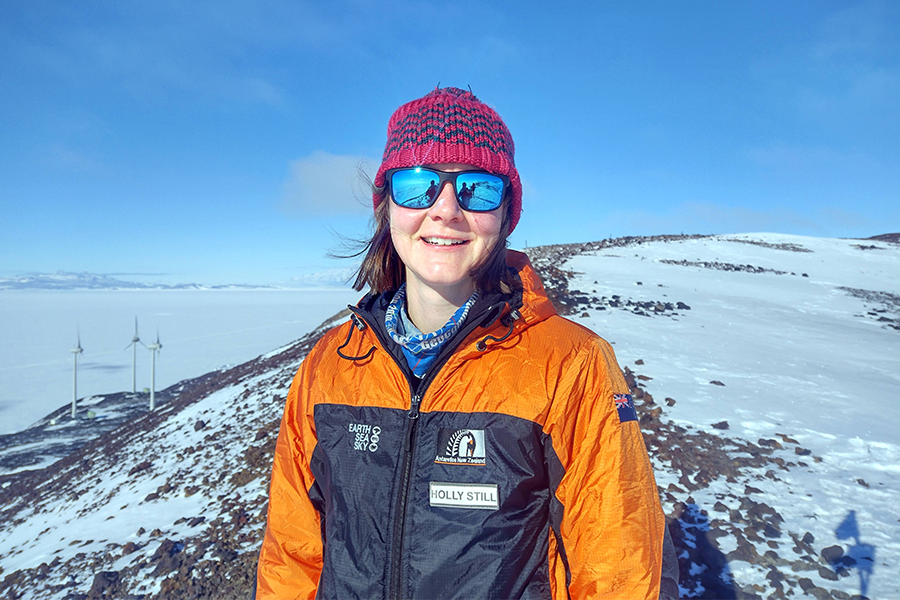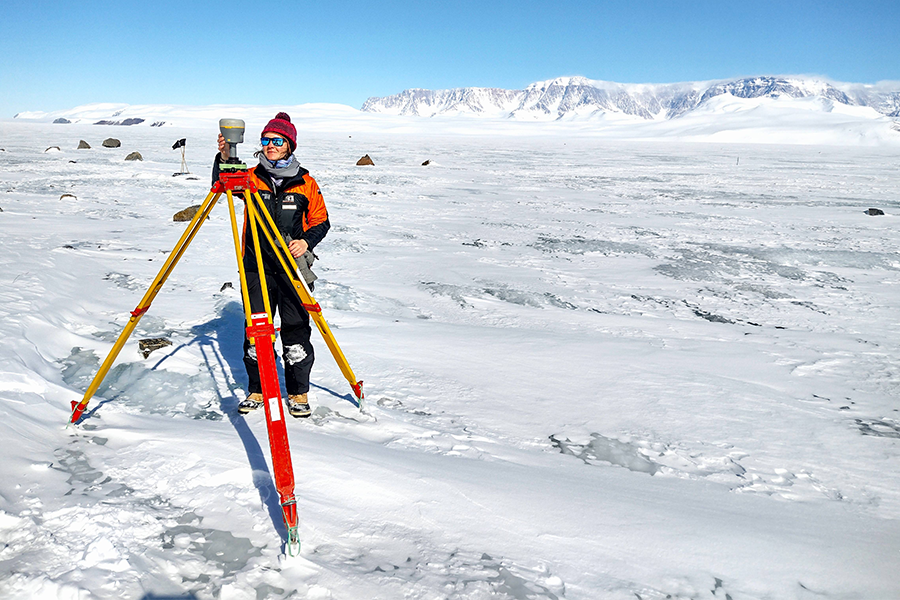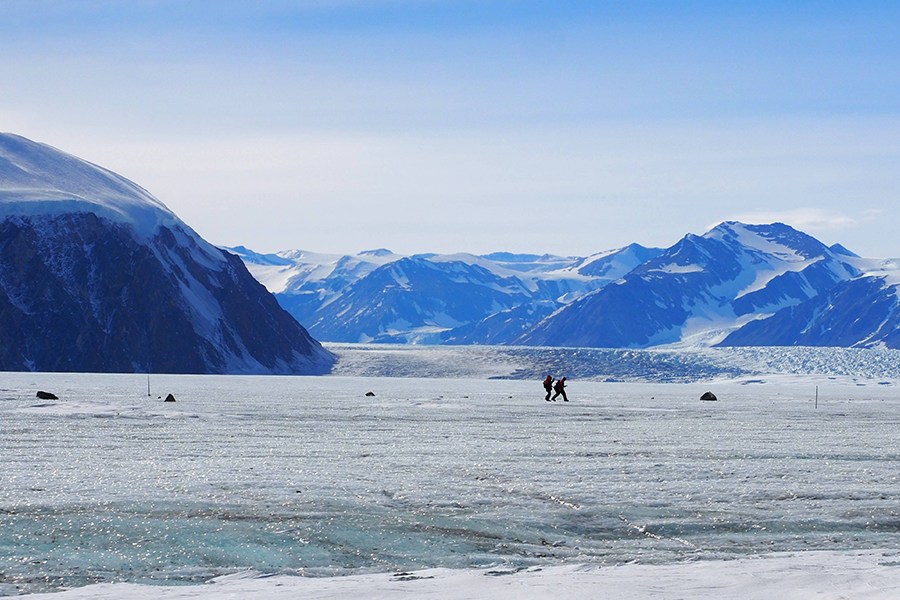
PhD candidate Holly Still during one of her trips to Antarctica.
During a research trip to Antarctica earlier this year, PhD candidate Holly Still had the chance to test how well a low-cost global navigation satellite system (GNSS) receiver would stack up against survey-quality GNSS when observing ice flow speed.
It was a move that saw her winning the Postgraduate Student Award at the recent New Zealand Spatial Excellence Awards.
GNSS technology, more commonly known as GPS positioning, can be found everywhere, Holly, of the School of Surveying, says.
“It’s in your smart phone, it’s in your fitness watch, maybe it’s in your car.”
In the past, survey-grade GNSS technology was the only technology available to carry out high-precision glaciological fieldwork, and it’s really expensive, she says.
“It can cost more than $20,000 per instrument. So, it’s not very accessible; cost is a massive barrier to people who want to deploy lots of these instruments.”

Holly setting up a GNSS positioning system to monitor the flow of the Priestley Glacier.
She installed four low-cost GNSS receivers, which cost less than $1,000 each, on the surface of Priestley Glacier and left them to monitor the speed and tidal motion of the ice. She was pleased to discover that the technology worked “just as well” as the survey-grade GNSS in terms of precision and data quality.
It was exciting, she says, as the low-cost receivers had not been widely used in Antarctica before.
Surveying researcher Dr Robert Odolinski, of the School of Surveying, has been conducting research on low-cost GNSS for the past decade, focusing on the theory of satellite positioning and how to improve its precision.
Holly says she was inspired by his work and willing to put it to the test.
Geology Department computing and numerical simulation technician Hamish Bowman – an “expert in building scientific instrumentation” also played a role in setting up the GNSS equipment, she says.
“We all put it together and it was ready to go for the Antarctic field season. Everything happens in a team, nothing is done alone down there if you want to collect interesting and useful datasets.”

The Priestley Glacier field site GNSS positioning experiments were conducted.
Ice core samples had been taken from that same field site previously and observing the ice flow speed with GNSS positioning provided contextual information for those core samples. Ice flow speed is an important quantity to observe because it describes the rate at which Antarctic ice is transported towards the ocean. These types of observations are also used to ensure that models of glacier and ice-sheet flow accurately represent the present-day ice-flow conditions in Antarctica.
The goal of her PhD is to study the mechanics of the lateral shear margins of Priestley Glacier, a 100 km outlet glacier that flows into the Nansen Ice Shelf. Glacier margins provide resistance to ice flow and high-precision surveying datasets can provide unique information about ice properties and deformation.
Holly is no stranger to the frozen continent, having visited four times and spending a total of about five months there since she started her master’s degree, prior to her PhD.
On previous trips she has helped a team studying a subglacial water channel which flows beneath the Kamb Ice Stream, collecting a combination of high-precision surveying observations of ice flow and flexure, and radar observations to infer ice thickness.
She will return in January, this time to Windless Bight on the McMurdo Ice Shelf as part of a team of eight to test a hot water drilling system.
Holly isn’t worried about sleeping during the perpetual daylight, joking that 24 hours of sunlight would give them plenty of time for science.
In reality, after a whole day of field work, “you’re so exhausted you just fall asleep”.
Links to the work:
https://doi.org/10.1017/jog.2023.101
https://github.com/hollystill/LowCostGNSS
Kōrero by internal communications advisor, Koren Allpress